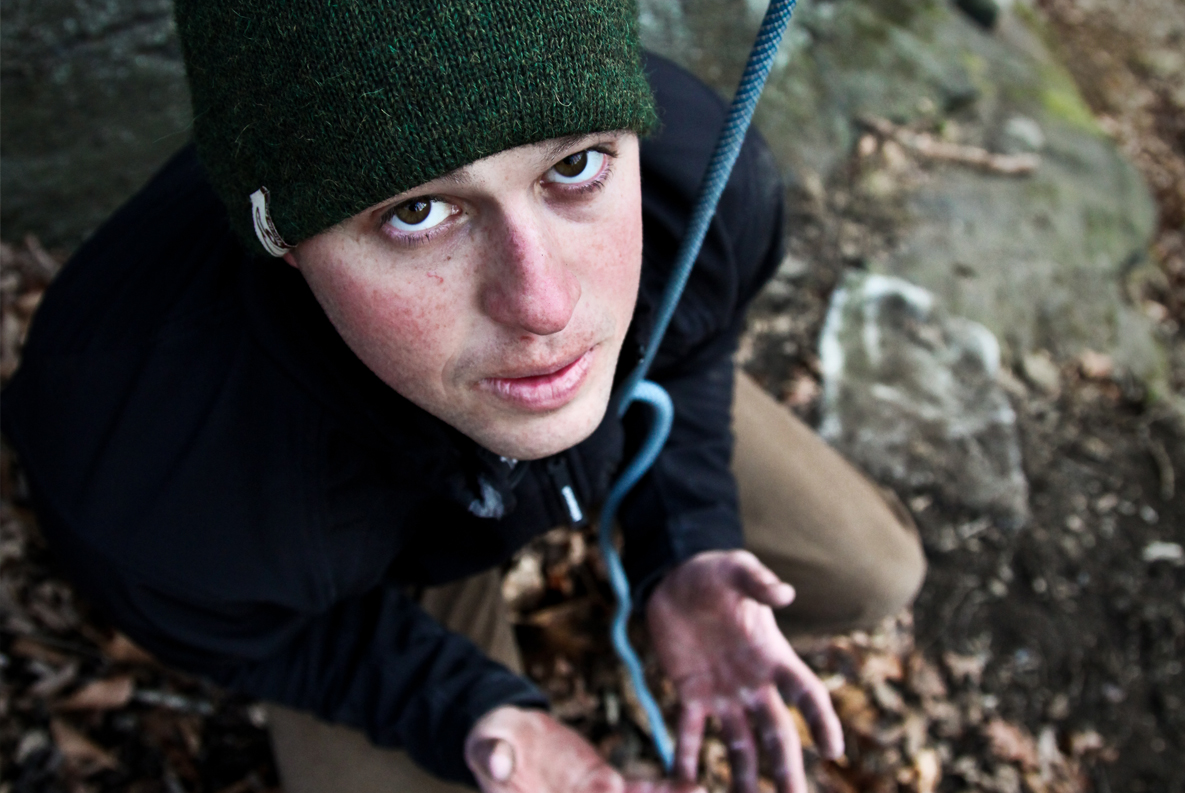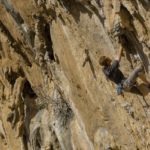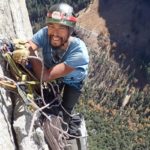Belaying while climbing is the act of running the rope through a specialized device (usually an ATC or GriGri) to catch a fall. In this guide you will learn the basic principles of top rope and lead belaying with the PBUS method.
Introduction to belaying a climber
It is absolutely essential to master appropriate belay technique. Starting in a gym is the safest learning environment, and remember to practice, practice, practice. Here are a few terms to understand:
- Live end – this is the side for the rope that goes from the belay device to the climber
- Dead end – opposite of the live end, the dead end of the rope is on the side of the belay device that does not go to the climber
- Brake hand – on the dead end of the rope and is responsible for catching a fallen climber; generally in a palm-down orientation
- Guide hand – on the live end of the rope and aids in handling/feeding the rope; generally in a palm-up (facing the belayer) orientation
Before we dive into this, make it a habit as the belayer to always ensure that a knot is tied into the end of the dead rope. This will prevent the end of the rope from running through the belay device in the event that the rope is too short for the pitch.
Related: Styles of Climbing
Top rope belay technique
Top rope belaying is a four-part process, best taught with the acronym PBUS: pull, brake, under, slide.
Pull
The pull is a simultaneous action of pulling with both the guide and brake hands in harmony. If using your right hand as the brake, the pulling motion will consist of gently pulling down with the left hand and outward with the right. These motions are to be done simultaneously so that extra slack doesn’t enter the system.
Brake
Towards the end of your pulling motion, the brake hand should immediately go down towards your hip into a brake position. This pull-to-brake motion should be fluid, somewhat resembling the curving nature of a crescent moon.
Under
With your right/brake hand at the hip, take your left/guide hand off the live end and place it under the brake hand.
Slide
With your left hand now under your right, slide your right/brake hand back up toward the belay device, ensuring that it never leaves the rope. After sliding, return your left/guide hand to the live end, ready to repeat the process.
Belaying a leading climber
Lead belaying involves the ability to safely feed out slack, in addition to mastery of the top-rope method above. This belay technique has several components: awareness, positioning, feeding, and slack maintenance.
Related: Overview of Lead Climbing
Awareness
Always maintain your attention on the leading climber; falls are often unexpected.
Positioning
It is important for the lead belayer to not stand directly under the climber, as an early fall could cause the climber to land on the belayer (falling gear and rocks are also of concern). Thus, stand to the side of the climber, several feet from the wall.
Feeding
Giving slack to a leader involves a feeding motion of both the guide and brake hands simultaneously. If using your right hand as the brake, feed the rope up and towards the climber with your left/guide hand, while concurrently feeding the dead end of the rope up through the belay device. These motions should be done in harmony, followed by a slide of the guide hand back toward the belay device and a slide of the brake hand back down towards the hip into brake position. Ensure that your break hand is never leaving the device.
Slack maintenance
As the belayer, it is your responsibility to make sure there is not too much slack in the system (would result in a bigger fall), nor too little (may result in “short-roping” or tugging on the leader). A gentle arch in the live end of the rope from the belayer to the wall is ideal. When too much slack is in the system, use the PBUS method above to return to an appropriate level of slack.
Got the technique mastered? Then learn these advanced belay techniques.








